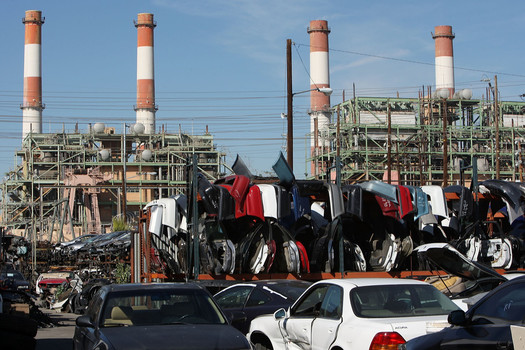For decades, experts have believed that children living in cities were more likely to have asthma than children in suburban or rural areas. But a new study indicates that factors other than location – such as income and race – may play a more substantial role in children’s risk of developing asthma.
The researchers compared more than 23,000 U.S. children living in cities and outside of urban areas and found no differences in the risk of asthma in children living in either area. However, they found a strong association between poverty, African-American and Puerto Rican ethnicity and a greater-than-average risk of asthma.
“Our results highlight the changing face of pediatric asthma and suggest that living in an urban area is, by itself, not a risk factor for asthma,” says lead investigator Corinne Keet, MD, PhD, a pediatric allergy and asthma specialist at Johns Hopkins University in a news release. “Instead, we see that poverty and being African American or Puerto Rican are the most potent predictors of asthma risk.”
For more than 50 years, factors thought to increase the rates of asthma in children included urban living, pollution, cockroaches, and other causes. But the researchers note these factors may not be the main reason inner-city children get asthma.
Instead, increasing poverty in suburban and rural areas as well as more ethnic and racial minorities moving out of cities may better explain dropping asthma rates in cities.
“Our findings suggest that focusing on inner cities as the epicenters of asthma may lead physicians and public health experts to overlook newly emerging ‘hot zones’ with high asthma rates,” says senior author Elizabeth C. Matsui, MD, MHS, pediatric asthma specialist and associate professor of pediatrics and epidemiology at the Johns Hopkins University School of Medicine.
The study was based on surveys of parents and caregivers of 23,065 children, ages 6 to 17. The results indicated that 13 percent of inner-city youth had asthma, compared with 11 percent of children living outside of inner cities.
Children in low-income families with asthma were more likely to have an asthma attack requiring emergency treatment when compared to children of families with higher incomes. This factor was a stronger predictor on the risk of asthma than living in an impoverished neighborhood.
African-American children had a 17 percent higher asthma rate and Puerto Rican children had a 20 percent higher asthma rate compared with white children (10 percent), Hispanic (nine percent), and Asian (eight percent). The researchers note that African Americans and Puerto Ricans tend to have more of an intrinsic risk for asthma because of biologic and genetic differences.
Urban areas in the northeastern United States had the highest rates of asthma – 17 percent – and urban areas of the western United States had the lowest asthma rates at eight percent. Other results were:
Asthma rates in low-income suburban areas of the northeast was 21 percent compared to 17 percent in the nearby urban area in the same region.
In the Midwest, low-income areas in medium-sized metro areas had asthma rates of 26 percent; in urban areas of the Midwest, 15 percent of children had asthma.















